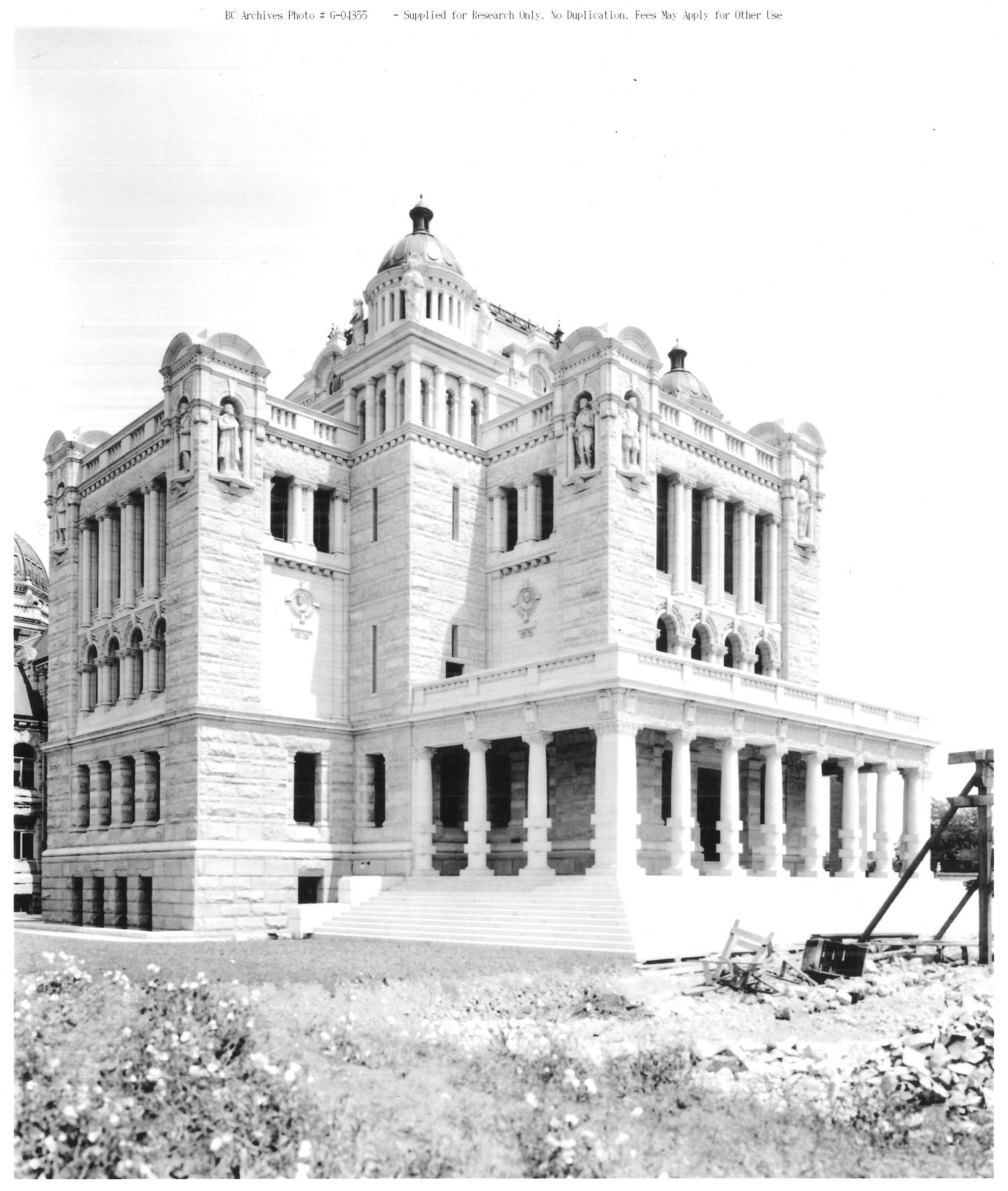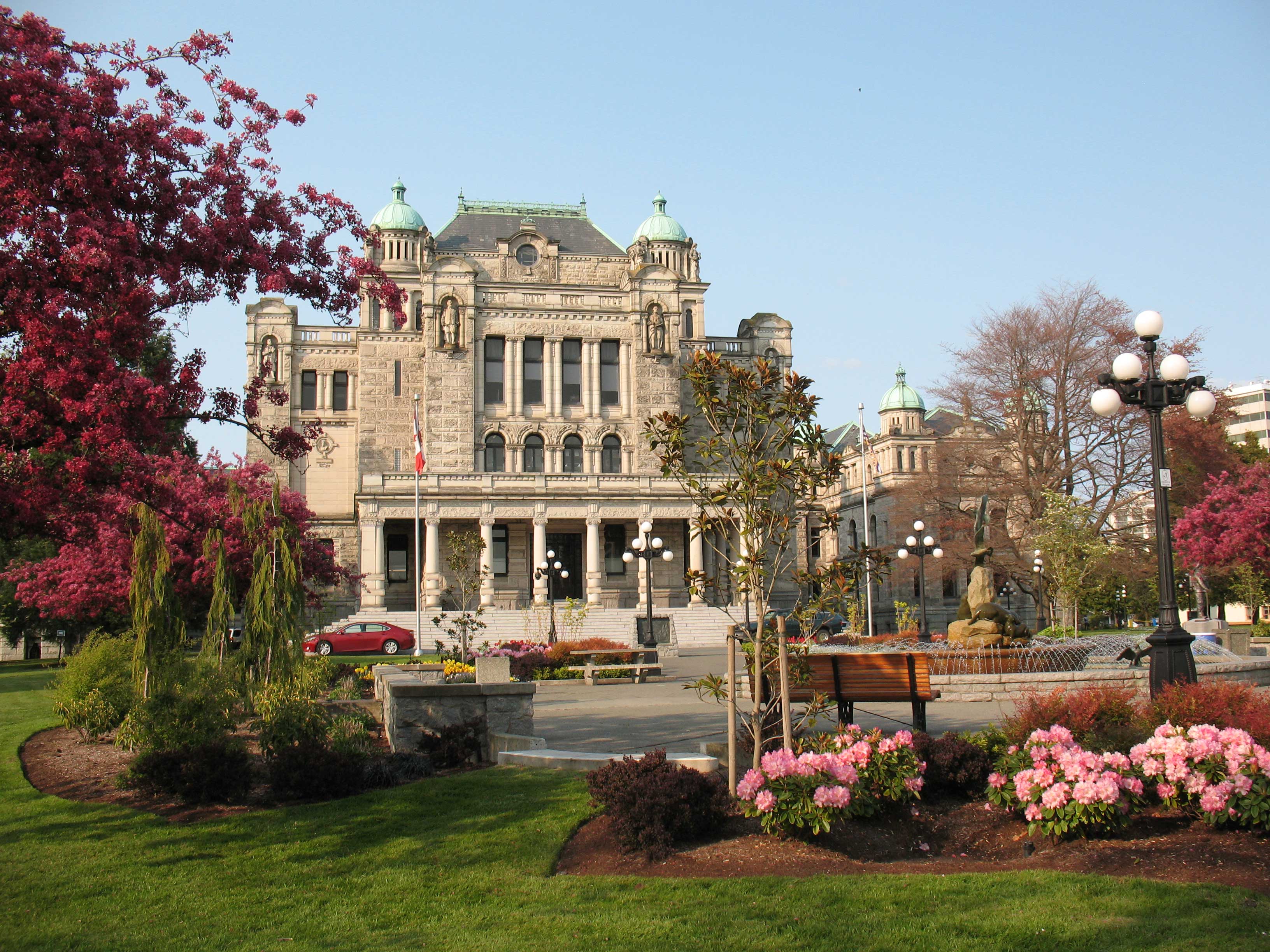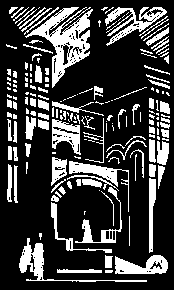2015 marked the hundredth anniversary of the Legislative Library's service in its current home: the stunning south wing of the British Columbia Parliament Buildings.
Following more than one hundred years of operation in the library wing, the Legislative Library continues its mandate to serve the information needs of B.C.'s MLAs, their caucus and constituency staff, Assembly staff, and statutory offices.
The Library continues to broaden its services and support embracing electronic resources and archiving and digitizing current and historical content.
Humble Beginnings
The Library itself was born before the confederation of the province, established by a small grant from the Colonial Legislature of Vancouver Island in 1863. A few books were purchased and shelved unattended in a single room. Statutes, parliamentary papers, and reference materials were added slowly over time, and when R. E. Gosnell was appointed the first Provincial Librarian in 1893, there were between two and three thousand items in the Library collection. Gosnell had big ambitions for the Library, envisioning services and resources that could support not only the Legislative Assembly, but also the rest of the Province. He purchased as many works as possible to further his vision, and when the Parliament Buildings were completed in 1897, the Library moved from the 'Birdcages' into new quarters inside.
Thanks to Gosnell and his successor, E.O.S. Scholefield, the Library rapidly outgrew this space as well. Within six years, eighteen-thousand volumes were spilling into nine rooms, and Legislature staff even considered converting the kitchen and dining room into additional Library space. When plans were made to build additions to the Parliament Buildings, it was clear that a new Library had to be included. Francis Rattenbury, architect of the original buildings, returned to design the expansion project in 1911.

Building a New Home
In September 1912 the Governor-General, His Royal Highness the Duke of Connaught, arrived in Victoria to lay the cornerstone for the Library wing. At the time, it was noted that the Duke had granted his name for the Library’s use, and the press spent great pomp and ceremony praising the future ‘Connaught Library’. The name did not stick much beyond that year and, in line with Gosnell's vision, shortly became known as the 'Provincial Library.'
Construction of the expansion took three years, and by the summer of 1915, the Library began moving into its current home. Reports from that year indicate that the entire collection – tens of thousands of items – was moved by the small but enthusiastic Library staff. Scholefield, then the Provincial Librarian, noted that the task was completed so ‘cheerfully’ that the move was finished in only a few weeks.
The Library opened its beautiful new space to the public on September 15, 1915.
The Provincial Library
The early librarians' ideal of creating a library that could serve the whole Province had a hand in forming library and archives services all over British Columbia. From almost the beginning, the Library curated a separate, smaller collection to focus on the history of British Columbia. Materials were painstakingly selected from all over the province for decades. These items became the bedrock of the Provincial Archives. For many years, the Provincial Librarian also received the title of ‘Provincial Archivist’, and the archival collection was managed and stored by the Library. In 1970, the B.C. Archives separated from the Library and moved into a building of its own nearby.
Starting in 1898, the Library also maintained a travelling library program, which sent small collections of fifty books to anywhere in the Province that required it. This included smaller communities without library service, schools, lighthouses, even ships at sea. When the Public Library Commission was established in 1919 they took over this service; by that point almost two hundred travelling collections were in circulation.
In spite of managing these and other projects, the Library continued to provide important services to Legislative staff and members of the Assembly. This included everything from research and reference, to supplying publications and other materials, and eventually to technical and computer support.
The Reference Department itself has a history almost as long as the Library wing. It was established in 1920, and at the time was lauded as the first distinct Legislative Reference Department in Canada. The Department was created to “furnish the Ministers and their Deputies, Members of the Legislative Assembly, and the Legislative Counsel and other public officials such information as they require.” It continues with this mission today.
Quick Links
B.C. Government Publications Search Portal
Library Publications and Collections
Digital Resources for MLAs and Assembly Staff
History of the Legislative Library
Library Collections Terms of Use
Library Hours
8:30 a.m. - 5:00 p.m., or until adjournment
Monday to Friday (closed holidays)
Note that when the Legislature is sitting the Library is only open to Members of the Legislative Assembly and Assembly staff. Before coming to use the Library it is best to call (250-387-6510) to ensure that we are open.
Contact Us
Legislative Library of British Columbia
Parliament Buildings
Victoria, B.C., Canada
V8V 1X4
Phone: 250-387-6510
Fax: 250-356-1373
Email: library@leg.bc.ca

The Legislative Library
With the Archives separated and public library services long-since flourishing, during the 1970s the Library decided to re-focus and prioritize their services to members of the Legislative Assembly. They stopped using the 'Provincial Library' name and instead took up their statutory title: the 'Legislative Library.'

Over the years, the Library has maintained a strong focus on legislative services. However, true to its roots, a small amount of 'Provincial Library' services remain. When staff are not working to support the Legislative Assembly with research or materials, they find time to help government employees, public scholars, historians, and press.
The Legislative Library has surpassed R.E. Gosnell's dreams: a comprehensive collection that supports the political and the public, staffed by a long line of talented and passionate individuals. The Library staff are proud of the work they do for each and every client, and they look forward to the challenges brought on by the next hundred years.
Legislative Library Timeline
| PDF version (includes sources) | ||
| 1858 | Members voted on Sept. 23 to purchase "a Library for the use of the House of the Assembly." One writer suggested very little came of the fund. (The library was traditionally believed to have begun in 1863.) | |
| 1863 | Members voted on Feb. 16 to use $1,000 for a library to be used by the elected members. Some writers suggested that -- although individuals were put in charge of the growing collection -- no substantial work was done until R.E. Gosnell took over in 1893. | |
| 1893 | A former reporter, R.E. Gosnell took charge of the library on Nov. 1. He found it "in a very incomplete and disorganized condition." His goal was to create "a useful library, one that would largely anticipate not only the requirements of the Legislative Assembly... but [also] the enquiries of the Province at large..." | |
| 1894 | Royal Assent was given on April 11 to "An act to establish and maintain a Library for the use of the Legislative Assembly and to constitute a Bureau of Statistics." | |
| 1897 | Alma Russell was mentioned in the annual report as working for the library. Trained at the Pratt Institute of Brooklyn, she was called the first professionally educated librarian in the province. Gosnell published his Year Book of British Columbia, an important early record of the province's history. | |
| 1898 | The new Parliament Buildings – which housed the library – were officially opened on Feb. 10, 1898. A former assistant librarian, E.O.S. Scholefield took over as head librarian. The traveling libraries service was started. Books were sent to communities that paid $6 for a case. It was believed to be the only service of its kind at the time in Canada. | |
| 1908 | Gosnell was put in charge of a new provincial archive. The government designated $3,000 that year for "collection of archives." | |
| 1910 | Scholefield took over the archive while still the head of the legislative library. According to a newspaper report, he would "combine in future the duties of provincial archivist and provincial librarian." | |
| 1911 | In September, a group met in Scholefield's office and agreed to form a provincial library association. It would become the British Columbia Library Association. | |
| 1915 | The library moved into a new wing of the legislature -- its present location -- in the summer and was open to the public in September. | |
| 1916 | The Legislature's Public Accounts Committee investigated the construction of the Parliament Building's new wing, which housed the library. The committee found: "It was shown that the new wings were built as cheaply as other large structures built at that time; that the inspection of all contractors' work was rigid... No irregularity whatever was shown in the Department of Public Works in connection with this matter." | |
| 1919 | The Public Libraries Act, SBC 1919, c. 48 was assented to on March 29. According to one researcher: "There is no doubt that E.O.S. Scholefield... played an important part in the preparation of this legislation." The law created the Public Library Commission, which took over the traveling libraries service. Scholefield died on Christmas Day after a lengthy illness. | |
| 1920 | A unique legislative reference service was established. The service was believed to be the only one of its kind in Canada. | |
| 1934 | Dr. W. Kaye Lamb became provincial librarian and archivist in September. | |
| 1936 | Lamb was given a third job title -- Superintendent under the Public Libraries Act. | |
| 1942 | Staff of the library and Public Library Commission volunteered their own time to operate the "War Services Libraries" for Vancouver Island. The library, according to its annual report, served "virtually as headquarters for this service, which in 1942 sent out over 10,000 books to naval, military and air force stations in every part of Vancouver Island." | |
| 1943 | According to that year's annual report, the library served as "a collecting agency for valuable material that has been sought by the army, navy and air forces of Canada and the United States." | |
| 1954 | A newspaper report hinted the provincial library might be checked for subversive material. Premier WAC Bennett rejected this idea, saying 'no investigation is necessary." Provincial Librarian Willard Ireland said in a statement: "No instructions have been issued to me regarding the probability of an investigation of the books in the provincial library, nor do I anticipate receiving such instruction." | |
| 1970 | The archives moved from the Parliament Buildings to a new home in the museum precinct. | |
| 1974 | The library stopped calling itself the Provincial Library and returned to its statutory name: Legislative Library of British Columbia. Willard Ireland, who had headed both the archives and library since 1946, retired this year. He was replaced by two people -- one to head the library and one to run the archives. | |
| 1985 | The Legislative Library Act, RSBC 1979, c.230 was amended to grant the Speaker sole responsibility for and control over the library. Previously responsibility for the library had rested with a committee consisting of the Speaker and the members of the Executive Council. | |
| For a complete timeline of library directors, please see Provincial Library Directors: A History and Timeline. | ||

The Library's Logo is a linocut print of the entrance to the Legislative Library by an unknown artist. The print is a close replica of the entrance. The original linocut block was found in the attic in 1985. Its only previous known use was on the cover of the British Columbia Library Association's B.C.L.A. Bulletin of January 1955, when James G. Mitchell, Reference Librarian and later the Legislative Librarian (1974 to 1984), was editor of the quarterly publication.
For more information on the Legislative Library and its history, please check out the video celebrating our 100th anniversary.
